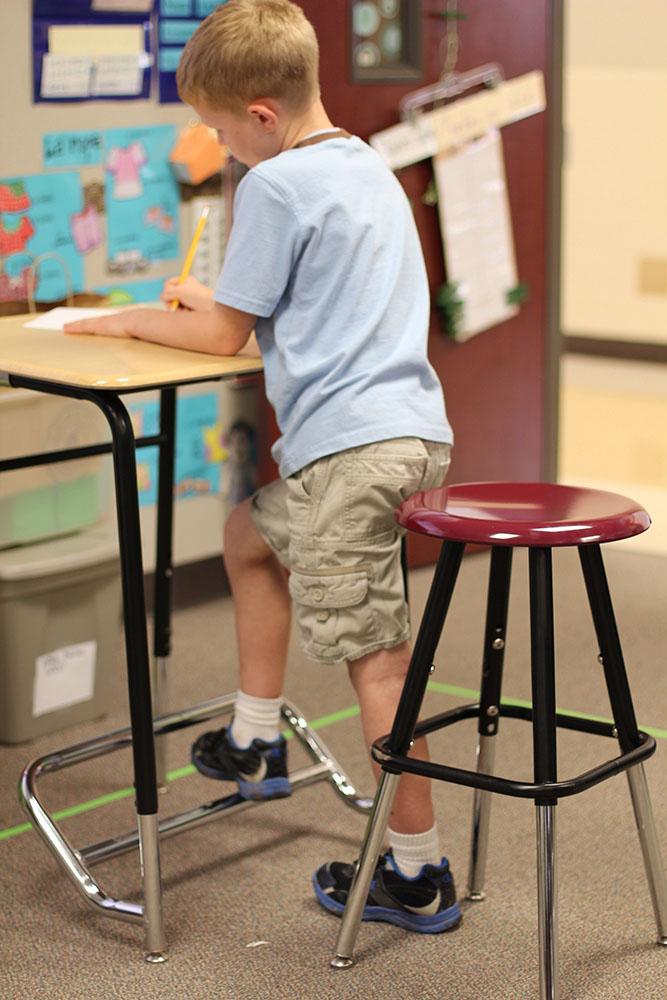Since 2006, some schools have been giving up desks in the belief that sedentary education is doing a disservice to children. Another study adds to that debate. The Texas A&M Health Science Center School of Public Health finds students with standing desks are more attentive than their seated counterparts, with 12 percent greater on-task engagement in classrooms with standing desks
The findings were based on a study of almost 300 children in second through fourth grade who were observed over the course of a school year. Engagement was measured by on-task behaviors such as answering a question, raising a hand or participating in active discussion and off-task behaviors like talking out of turn.

Preliminary results show 12 percent greater on-task engagement in classrooms with standing desks, which equates to an extra seven minutes per hour of engaged instruction time. Credit: Texas A&M Health Science Center
Standing desks - also known as stand-biased desks - are raised desks that have stools nearby, enabling students to sit or stand during class at their discretion.
Mark Benden, Ph.D., CPE, associate professor at the Texas A&M Health Science Center School of Public Health, says desks can also help reduce obesity - with students at standing desks burning 15 percent more calories than students at traditional desks. 25 percent for obese children. "Standing workstations reduce disruptive behavior problems and increase students' attention or academic behavioral engagement by providing students with a different method for completing academic tasks (like standing) that breaks up the monotony of seated work.
"Considerable research indicates that academic behavioral engagement is the most important contributor to student achievement. Simply put, we think better on our feet than in our seat."
Published in the International Journal of Health Promotion and Education.




Comments